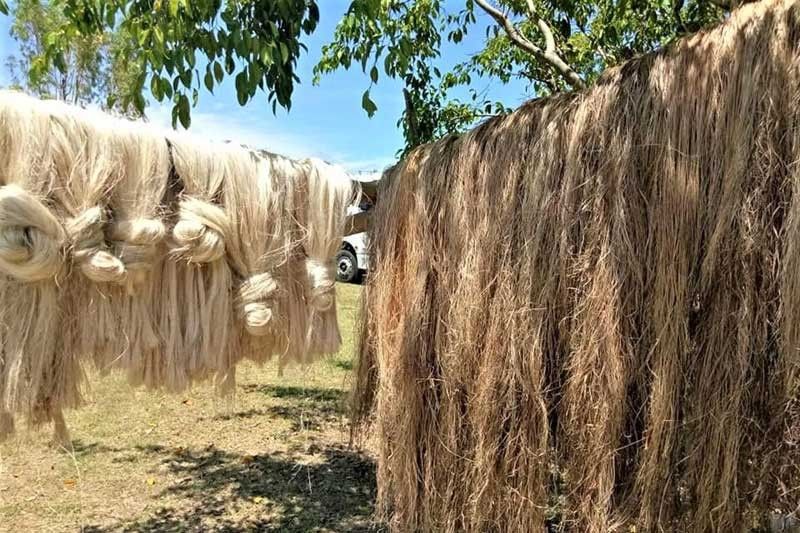Abaca farming turns Catanduanes into a ‘Happy Island’

MANILA, Philippines — The tourism tag “Happy Island” suits the province of Catanduanes to a T. It is blessed with unspoiled beaches, rolling terrain, and many idyllic spots that continue to attract foreign and domestic visitors.
Latest tourism figures from Catanduanes showed an increase of 11.31 percent last year, driven by visitors seeking new travel experiences.
Catanduanes also takes pride in being the country’s top producer of abaca.
The Bicol region contributes about 40 percent of the roughly $130.3 million annual abaca exports to major global markets. At least 90 percent of the regional share comes from the rich soils of the Happy Island.
Abaca has been traditionally turned into twine, cordage, textiles, and handicrafts. Its more modern applications now include manufacturing various items such as automotive parts, paper and currency notes, and many fashion and lifestyle products.
The quest for organic and eco-friendly raw materials has further contributed to the preference for abaca over synthetic materials.
The Department of Science and Technology, through its Industrial Technology Development Institute (ITDI), recently developed a technology that combines abaca and resin to form a composite that is lightweight, cheap, and corrosion-resistant.
ITDI used this technology to form the roof and sidecar of a motorized tricycle to demonstrate the unique qualities of the composite.
The global demand and prospects are obviously huge but the challenges faced by abaca industry players in meeting this demand are equally daunting. There has to be massive expansion and rehabilitation of abaca farms throughout the country.
Apart from this, the aging population of abaca farmers needs to be addressed by encouraging the younger generations and convincing them that farming can be profitable.
Economic losses have been reported due to low productivity and deteriorating fiber quality resulting from viral-borne plant diseases. Thus, new methods are needed to improve not only the yield but also the quality of the fiber.
During the recently held Abaca Festival, Catanduanes Gov. Joseph Cua assured the farmers of government support in propping up abaca planting while reminding them of the need to improve the quality of their produce.
Noting the loss of interest in farming among millennials, he said initiatives are being taken to make farming easier, requiring less brawn activity, but with the potential for workers to rake in decent income.
During the gathering, 107 farmers from the 11 municipalities of the province were awarded cash incentives to help rebuild abaca farms that were devastated by Typhoon Nina in 2016.
Philippine Fiber Industry Development Authority (PhilFIDA) executive director Kennedy Costales cited the latest initiatives to double or even triple the country’s abaca output.
Costales reiterated PhilFIDA’s vision to mechanize abaca production in Catanduanes and the rest of the country. In the next few years, abaca farmers in the province will be organized into cooperatives which be run by professional management teams.
This is the core of the abaca tuxy buying special project (ATBSP), a new trading system meant to eliminate the traditional “all-in” buying scheme where unorganized farmers sell their produce in an individual and fragmented manner.
The farmers are at the losing end of this arrangement, as the grades and standards of abaca are applied only at the level of the grading and baling establishments (GBE), who get the premium for high-quality fibers. They are thus constrained from improving the yield and quality of their products.
ATBSP aims to improve the marketing arrangement by clustering farmers into cooperatives with 50 to 100 members each. The project takes half the burden off the farmers by simplifying abaca processing. From the traditional 12 step program, it is now down to six. This will allow farmers to focus on the quality of the fiber.
Farmers will be trained on all aspects of production, including warehousing and fiber trading, grading and classification of fibers that meet market standards.
“This shifts their mindsets from being mere farmers to being entrepreneurs,” Costales said.
The cooperatives will handle the rest including stripping the fibers using spindle-stripping machines, drying, classifying, bundling, and selling the fibers in bulk directly to GBEs and local processors.
Compared to hand-stripped abaca fibers, which are coarse and priced at P55 per kilo, fiber produced mechanically are of higher quality and can be bought at P110 per kilo on average.
Earlier this year, Catanduanes Rep. Cesar Sarmiento filed House Bill No. 7369, declaring the province as the abaca capital of the Philippines. The bill seeks to promote and support the abaca industry in the province, while safeguarding it from destruction caused by plant diseases and calamitous events.
The proposed measure also seeks the creation of an Abaca Research and Development Center.
- Latest

























